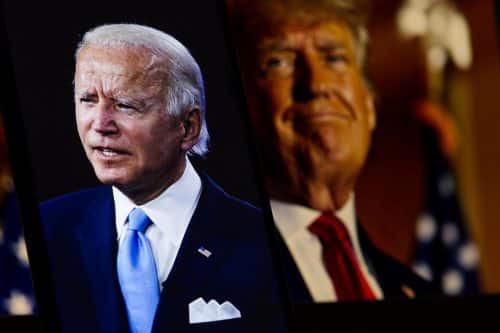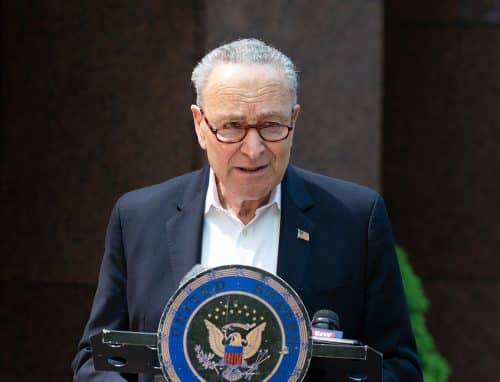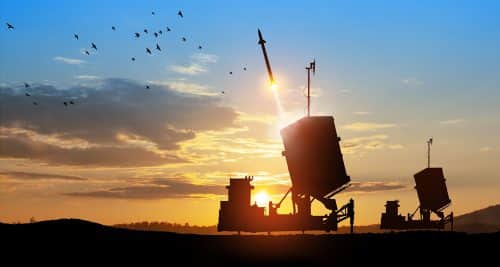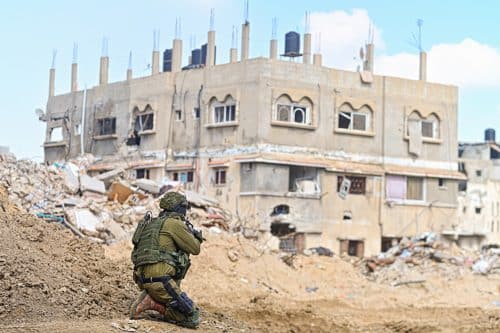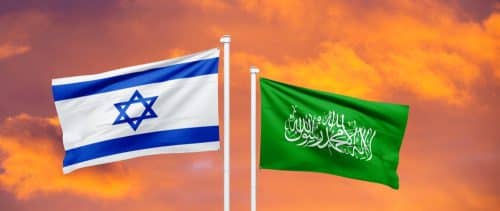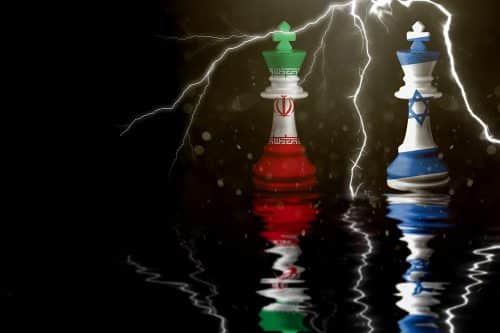Recently, it seems that Israel’s northern front with Hezbollah is escalating towards a boiling point. Rocket firing, a launch of attack drones over the gas barge, the terrorist attack in Megiddo, Hezbollah’s pitching of tents on Israeli territory and their use as a bargaining chip, confrontations with IDF soldiers and attempts to sabotage the border fence – all indicate growing willingness on the part of Nasrallah to engage in a confrontation with Israel, or at least to test Israel’s willingness to retaliate. Just recently, in his speech on July 12 marking the 17-year anniversary of the Second Lebanon War, he put back on the table previous claims regarding the village of Ghajar on the Israel-Lebanon border, the seven villages, the Shebaa and Shuaibah farms, and he added a threat regarding the tents – “If [Israel] dares to act against the tents, we will not remain silent. Our people will know what to do”.
Only a handful of people are familiar with the “hidden hand” of Iran that is behind this policy, and not only in Lebanon, but also in Syria, Gaza and Judea and Samaria, alongside Iraq, Yemen and other places. IDF Chief of Staff Lt. Gen. Herzi Halevy and Chief of Military Intelligence Maj. Gen. Aharon Haliva have also made unusual comments regarding these developments, in which they said “Nasrallah is close to making a mistake that will throw the entire area into a large-scale war”, and that the Hezbollah dares to “challenge us where it thinks no war can occur. This is an opportunity to manufacture some surprises if needed”.
Teheran is the hand that to a great extent mobilizes the elements which are part of the “Jerusalem Axis” – Iran’s effort to integrate all its proxies, or “fingers” into a single crushing “fist” against Israel, in a multi-arena campaign, in which the Hezbollah, the Hamas, the Palestinian Islamic Jihad (PIJ) and other entities act in a concerted effort against Israel is a challenging scenario for the IDF, which prefers focused fighting and defeating or deterring the enemy in a single theater. However, a multi-arena campaign is precisely the scenario Teheran is diligently working on.
The launching of the 34 rockets against Israel by south Lebanese Hamas squad in April 2023 during Easter and Ramadan can be viewed as the harbinger of the collaboration between Hamas and the Hezbollah. Any activity transpiring in south of Lebanon is undoubtedly done with the full knowledge and approval of Hezbollah and Nasrallah. What is left is to follow how this collaboration materializes. According to reports in the Wall Street Journal, a week prior to the shooting incident, the commander of the Iranian Qods Force Ismail Qa’ani, who was responsible for building Iran’s proxy cells in the region, met with Hezbollah Secretary General Hassan Nasrallah and head of Hamas’ political bureau ,Ismail Haniyeh, and his deputy Saleh Arouri at the Iranian embassy in Beirut. Qa’ani encouraged them to act against Israel by firing 34 rockets into Israeli territory – an unusual action by the Hamas in south Lebanon – as an act of retaliation for Israel’s air strike in Syria, which resulted in the death of two Iranian advisers, and for a series of steps Israel had taken to thwart Iran from gaining a foothold in Syria. The Lebanese media reports that it is unlikely that an attack on such a scale could be carried out without being brought to Qa’ani’s attention, only hours before the attack taking place while he was having the Iftar supper with senior members of the organizations. Iran, which usually refrains from pointing a finger at Israel, did so publicly after the strike, and during the two funerals that were attended by masses of people, even stated that it would take revenge against Israel.
A senior source in the IDF told us that “Ismail Qaani, commander of the Iranian Revolutionary Guards’ Al-Quds Corps, who visited Lebanon in early April, ordered the opening of this center”, a center of operational coordination between Iran, Hezbollah, Hamas and the Palestinian Islamic Jihad (PIJ) in southern Lebanon, “a few hours before rockets were fired at Israel.” The source added that estimates in Israel are that the rocket launched into Israel in the wake of Operation Guardian of the Walls in 2021 was also carried out by Hamas operatives at the behest of Iran.
Nasrallah is aiming for and all-out war
A very senior official of Israel’s political security ranks told IDSF HaBithonistim: “The next move [by Nasrallah] will not be viewed on our part as a ‘Megiddo 2.0’ but as a ‘Third Lebanon War’”. In regard to General Haliva’s comments, the source said that “”The comments made by Head of Military Intelligence were intended for Nasrallah’s ears, who should know that the operation planned by him will inevitably drag the region into war, which the head of Military Intelligence described as a ‘large-scale war’.”
According to A. D. formerly a very senior official in Israel’s security and intelligence establishment “Nasrallah believes with all his heart that Israel is a ‘cobweb,’ as he said in 2006, and therefore he is betting on its weakness and the lack of an Israeli retaliation”. According to his estimates, Nasrallah believes that Israel will not act against Hezbollah solely for the provocative rocket fire by Hamas forces in southern Lebanon, reflecting his attempts to pass the buck for the Megiddo attack to other elements. “In the meantime, Nasrallah has an Israeli counterpart in this assessment”, he said, referring to statements by Israeli political sources that made this clear.
The “Jerusalem Axis” Exposed: The Iranian Names and Faces Behind the Formation of Iran’s’ Concerted Force in Lebanon
The radical “Jerusalem Axis” is the Iranian mechanism for “combining the arms”: a command center of concerted tools that integrates the military capabilities of Iranian proxy cells ahead of the “H-Hour”– Hezbollah, Hamas operatives in southern Lebanon, pro-Iranian organizations in Syria and Iraq, and the Houthis in Yemen. The mechanism was established to counter balance the Abraham Accords and has been building its force since Operation Guardian of the Walls. It remains to be seen whether and how the operations in Gaza and Jenin will affect the internal relations among the Axis members.
Various reports indicate that Iran supplies advanced equipment to the member organizations of the Jerusalem Axis – such as radars, UAVs and electronic technology for the operation of its joint command center. Iran has also dispatched specialists to operate this equipment.
One of the most important links in the Jerusalem Axis is the Palestinian branch of the Al-Quds Corps of the Iranian Revolutionary Guards, which is charged with the development of the military capabilities of Hamas and the Palestinian Islamic Jihad in Lebanon, part of which operates also in the Gaza and Judea and Samaria arenas. Saleh Arouri, a member of Hamas’ political bureau and the person in charge of Judea and Samaria in the organization, is a key player in the Axis and is the engine behind the force buildup and coordination with the Iranians.
We reveal here for the first time the senior Iranian commanders who lead the Palestinian branch of the Iranian Al-Quds Corps in southern Lebanon, and who also were responsible for the rocket launching against Israel during Passover 2023:
Sa’id Izadi: born 1964, head of the “Palestinian branch” of the Lebanese Corps of the Iranian Revolutionary Guards and in charge of all coordination with Hamas and the PIJ, including in the Gaza Strip, Judea and Samaria and Jordan. Izadi is an Iranian who lives in Lebanon and is responsible for weapons smuggling into Lebanon and Syria, and is therefore under surveillance by Western intelligence organizations. He is responsible for the coordination between Hamas, the PIJ and even Hezbollah, and is considered the coordinating element of the cooperation of the Jerusalem Axis terrorist organizations. He is considered one of the most prominent representatives of Iran in Lebanon and has been engaged for years in advancing Iran’s overall mission against Israel, including terrorist attacks against it.
Izadi has reportedly visited the Gaza Strip at least twice in recent years, entering the Strip through the Egyptian side of the Rafah crossing, using a fake Palestinian passport. He has close relations with PIJ leaders, including Akram Ajouri – a senior PIJ official in Damascus, who was targeted by Israel for assassination, and often encourages the PIJ officials to act independently against Israel, even when Hamas opts for inaction. Izadi also pressured his commanders in Iran, including Qassem Soleimani, to grant preference to the “loyal and disciplined” PIJ operatives over Hamas, creating tension between himself and elements within the Hamas such as Haniyeh, Arouri and Sinwar.
In 2018, Israel published Izadi’s photo. His significant role in the powered buildup of terrorist organizations in Lebanon led the Trump administration to impose economic sanctions against him in 2019.
Ali Marshad Shirazi (“Abu Jawad” or “Haj Marshad”): born 1969, Izadi’s bureau chief, according to Arab and other sources. He is also an Iranian who lives in Lebanon. Shirazi heads the monitoring and control unit tasked with executing military plans. As a result, he is in charge of a broad sector that includes Lebanon, Syria and the Gaza Strip.
Oftentimes, Shirazi requests the assistance of Unit 340 – the Al-Quds Corps’ technical unit that is in charge of the research and development of weapons and rockets – for his associates in the PIJ.
Izadi and Shirazi also operate the Cyber Unit, which provides special services to Hamas and the PIJ, headed by Abd Rahman al-May, an instructor in the field of cyber and information security, who was appointed to the position by Izadi and Shirazi. This unit is apparently also responsible for Hamas’ efforts to extract information from IDF soldiers’ cellular devices.
Majid Zira’i (“Abu Raqiya”): born 1977, operations officer of the Palestinian branch, which operates under the IRGC in Lebanon. His colleague Mustafa Khani (“Haj Majid”) heads the branch’s training and weapons division.
Dr. Majtaba Khodadi: a polygraph specialist and behavioral sciences expert, serves as an investigations and intelligence instructor for Hamas and PIJ terrorist operatives. Working alongside him is Hossein Roozave, a lecturer at Imam Hussein University, and an expert on international relations and head of the university’s Center for the Study of the Future, as an instructor in the field of international relations, where he trains researchers and analysts.
Conclusion: are Hezbollah and Hamas indeed seeking to form a concerted iron fist?
An integrated mechanism of all Iran-backed elements in south Lebanon would serve Iran’s designs against Israel well. An intended byproduct of such an alliance would be to dampen Israel’s “enthusiasm” to act against Iranian targets. Moreover, if Hezbollah can use Hamas in south Lebanon for operations, without sustaining Israeli retaliation against Hezbollah targets – it would afford Iran and the Hezbollah added value.
A former senior Intelligence officer told IDSF HaBithonistim: “There is no doubt that Iran wishes to see Israel drawn into routine security operations, and engage it with terrorist strongholds and border incidents, while Iran continues to build its force in the region”.
Yet sources within the security establishment claim that Hezbollah is not enthusiastic, to say the least, to form a mechanism that would operate on its home field in south Lebanon, and that there is internal pressure within the organization in Lebanon to avoid activities that would harm the already faltering country. The Shi’ites in southern Lebanon, who have not forgotten the horrors of the Second Lebanon War of 2006, are opposing such a strategy as well. Consequently, the relations between Hezbollah and the leaders of the Shi’ite community in southern Lebanon and the other political players in the country, place on the organization a host of constraints that demand a careful and balanced policy, albeit Nasrallah’s incessant boundary pushing recently.
In Hamas, the situation is far more complicated. Hamas had already signaled that it prefers to sit by the sidelines and bid its time, in the wake of the paralyzing blow it sustained in Operation Guardian of the Walls in 2021, as it had in two previous rounds Israel fought against PIJ in Gaza (Operation Breaking Dawn and Operation Shield and Arrow). An integrated mechanism of the various organization might render Hamas a mere Hezbollah “proxy” for all intents and purposes, which is why such an alliance is not supported by all of heads of Hamas’ political bureau, among them Yahya Sinwar, Hamas leader in the Gaza Strip who is considered very close to Egypt and not necessarily to Iran, and Khaled Mashaal, head of the Qatari camp, who has also visited Lebanon last year, but was not granted audience with the Hezbollah leadership – a public humiliation. As oppose to them stands the “Iran camp” in Hamas, led by deputy commander of the organization, Saleh Aruri. In any event, Sinwar himself had said in a speech at the beginning of May 2023, that Hamas will successfully breech the naval blockade on Gaza with the help of the Jerusalem Axis.
Given that Hamas is a component of the Iran axis and enjoys significant funding and support by Iran, even though it has its own interests, the stronger the Jerusalem Axis – the notion of “pacification” in the Gaza strip grows distant. Iran has no problem with this, and even views positively the escalation of tensions in the Strip, supported also by the Qatar-based Hamas leadership. Despite opposition by various elements in the Hamas, the threats made by Arouri right before Ramadan this year, are an indicator to the direction that the organization has been taking – the joining of the Jerusalem Axis, under Iran’s leadership. However, it may be that for the foreseeable future the Hamas will focus on perpetrating terror attacks in the Judea and Samaria area, both to prevent Israel’s retaliation against its infrastructure in Gaza, as well as to challenge the Palestinian Authority there.
A multi-arena scenario that will prove problematic for Israel is one in which Iran will be able to forge its “fingers” into a crushing “fist”, uniting Hezbollah, Hamas, PIJ and others against Israel. Hezbollah’s growing audacity in recent months is met by high vigilance on part of Israel, but might pose a threat of a new kind, such that will demand a comprehensive strategy against the Iran-led Jerusalem Axis along and within Israel’s borders.
The views expressed in this article are those of the author and do not necessarily represent the views of the movement
